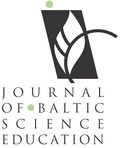ALIGNMENT OF CONCEPTS OF MEIOSIS AMONG CURRICULUM, TEXTBOOKS, CLASSROOM TEACHING AND ASSESSMENT IN UPPER SECONDARY SCHOOL IN REPUBLIC OF KOREA
| Title | ALIGNMENT OF CONCEPTS OF MEIOSIS AMONG CURRICULUM, TEXTBOOKS, CLASSROOM TEACHING AND ASSESSMENT IN UPPER SECONDARY SCHOOL IN REPUBLIC OF KOREA |
| Publication Type | Journal Article |
| Year of Publication | 2022 |
| Authors | Kim, Y, Lee, Y-hye, Lee, H, Lim, S.-M. |
| Journal | Journal of Baltic Science Education |
| Volume | 21 |
| Issue | 2 |
| Start Page | 232-244 |
| Pagination | Continuous |
| Date Published | April/2022 |
| Type of Article | Original article |
| ISSN | 1648-3898 |
| Other Numbers | E-ISSN 2538-7138 |
| Keywords | concepts’ alignment, meiosis concepts, semantic network, upper secondary school |
| Abstract | If the concepts used in curriculum, textbooks, classroom teaching, and assessment are not consistent, students may have difficulty in understanding the concepts of science correctly and this may lead to the formation of misconceptions. The purpose of this study is to measure the alignment of science concepts by analyzing the semantic networks of curriculum, textbooks, classroom teaching, and student assessment with respect to the contents on meiosis as covered in Life Science I. The semantic network method using the NetMiner 4.0 program was applied. 11 concepts were extracted from the curriculum commentary. The textbook presented 36 concepts; classroom teaching presented 54 concepts; a total of 23 concepts were presented from assessment. With respect to alignment of relevant concepts, 6 (gamete, chromosome, meiosis, gene, daughter cell and cell division) were linked to all 4 sources (curriculum, textbooks, classroom teaching, and assessment). These concepts are mainly used to explain the process of meiosis. It is concluded that the key concepts of meiosis exhibited alignment in curriculums, textbooks, classroom teaching and assessment. However, there are many concepts used only in textbooks and classroom teaching. The greater number of concepts in textbooks and teaching can become one of the causes of a deficit in learning. |
| URL | https://oaji.net/articles/2022/987-1652206452.pdf |
| DOI | 10.33225/jbse/22.21.232 |
| Refereed Designation | Refereed |
| Full Text |
